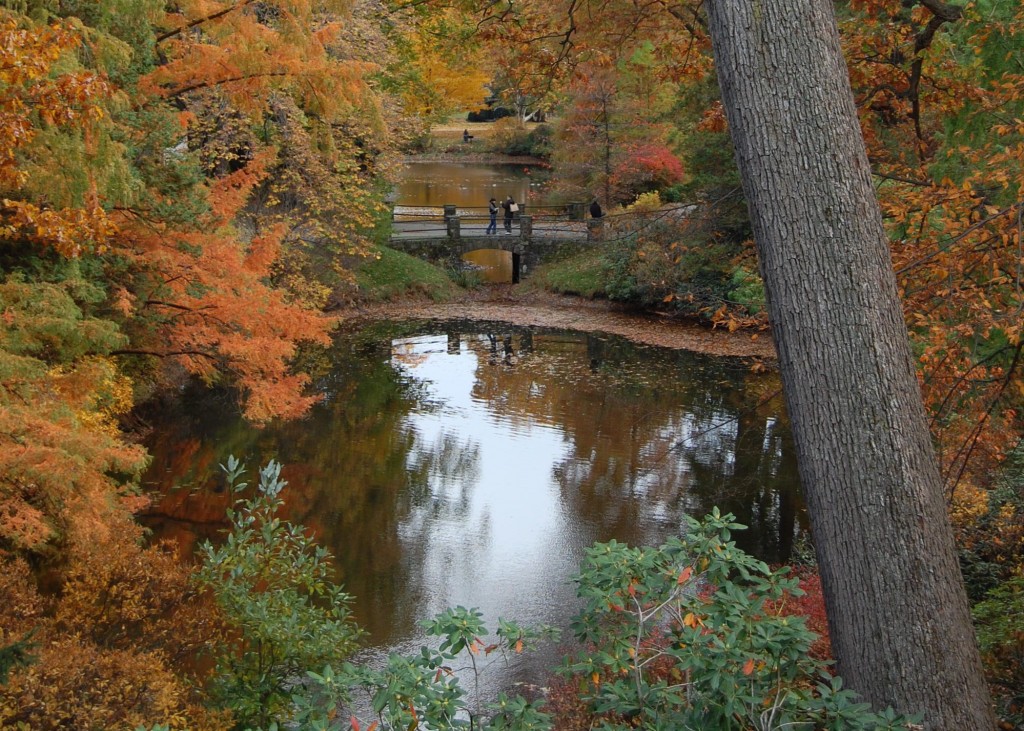APA Designates Mount Auburn a Top 10 Great Public Space for 2013
The American Planning Association (APA) announced the designation of Mount Auburn Cemetery as one of 10 Great Public Spaces for 2013 on October 4, 2013 through the organization’s Great Places in America program. Each year during National Community Planning Month, APA’s Great Places in America program names 30 exemplary public spaces, streets, and neighborhoods to highlight the role planning and planners play in adding value to communities, including fostering economic growth and jobs.
APA singled out Mount Auburn for its pioneering role in cemetery design, 180-year retrospective of changing tastes in funerary art, enduring memorials, significant architecture, panoramic views, and public programs. A place of repose for some 95,000 individuals, Mount Auburn is a sanctuary for wildlife and a site for human contemplation and enjoyment.
“We in Cambridge and Watertown are very pleased to see Mount Auburn Cemetery receive this recognition,” said Representative Jonathan Hecht, who represents Watertown and West Cambridge in the Massachusetts State Legislature. “Mount Auburn has been a treasured part of our public space for generations, linking us with our forebears, our history and culture, and the wonders of nature. We are deeply grateful to those who have made the Cemetery what it is and eager to share it with those who have not yet experienced its sublime beauty,” Rep. Hecht said.
“Founded for reasons both practical and aesthetic, Mount Auburn gave birth to the ‘rural’ landscaped cemetery movement,” said APA Chief Executive Officer Paul Farmer, FAICP. “Not only was it a model for other burial grounds,” Farmer continued, “Mount Auburn served as inspiration for, among others, New York’s Central Park. Through the ground’s blending of art, architecture, landscape design, and carefully considered amenities, this cemetery gracefully accommodates both the living and deceased.”
Developed as a response to overcrowded and poorly maintained urban graveyards, Mount Auburn Cemetery was influenced by Pere Lachaise Cemetery in Paris. The Cemetery was eagerly embraced by the public with some 2,000 attending its consecration ceremony. Today, the Cemetery is a destination for some 200,000, who come each year to visit loved ones, traverse the walking paths, take a self-guided tour, or attend one of the Friends of Mount Auburn’s educational programs.
Besides its continued role as an active cemetery, this National Historic Landmark is also a botanical garden, outdoor museum of art and architecture, and urban wildlife sanctuary. The Cemetery’s 5,000 trees make it a haven for birds and bird-watchers.
Many accomplished works of art can be found among Mount Auburn’s 60,000 monuments, which when combined with the cemetery’s buildings – including an 1842 Egyptian Revival Gatehouse, two historic chapels, and a 62-foot tall observation tower – reflect nearly two centuries of trends in art, design, and architecture, and shifting attitudes about life and death. Many notable figures – among them Henry Wadsworth Longfellow, Dorothea Dix, and Henry Cabot Lodge – are joined by others of lesser prominence and some 900 individuals who fought or served in the Civil War.
APA’s Great Public Spaces, Great Neighborhoods, and Great Streets feature unique and authentic characteristics that have evolved from years of thoughtful and deliberate planning by residents, community leaders, and planners. The 2013 Great Places have many things Americans say are important to their “ideal community” including locally-owned businesses, transit, neighborhood parks, and sidewalks. They illustrate how the foresight of planning fosters communities of lasting value.
The nine other APA 2013 Great Public Spaces are: Tony Knowles Coastal Trail, Anchorage, AK; Grand Park, Los Angeles, CA; The Broadwalk in Florida’s Hollywood, Hollywood, FL; Norman B. Leventhal Park at Post Office Square, Boston, MA; Forest Park, St. Louis, MO; Essex County Branch Brook Park, Newark, NJ; Grand Central Terminal, New York City, NY; Walnut Street Pedestrian Bridge, Chattanooga, TN; and Esther Short Park, Vancouver, WA.
For more information about these Great Public Spaces, as well as APA’s top 10 Great Neighborhoods and top 10 Great Streets for 2013 and previous years, visit www.planning.org/greatplaces. For more about National Community Planning Month taking place throughout October visit www.planning.org/ncpm.
The American Planning Association is an independent, not-for-profit educational organization that provides leadership in the development of vital communities. APA and its professional institute, the American Institute of Certified Planners, are dedicated to advancing the art, science, and profession of good planning – physical, economic, and social – so as to create communities that offer better choices for where and how people work and live. Members of APA help create communities of lasting value and encourage civic leaders, business interests, and citizens to play a meaningful role in creating communities that enrich people’s lives. APA has offices in Washington, D.C., and Chicago, Ill. For more information, visit www.planning.org.

Leave a Reply